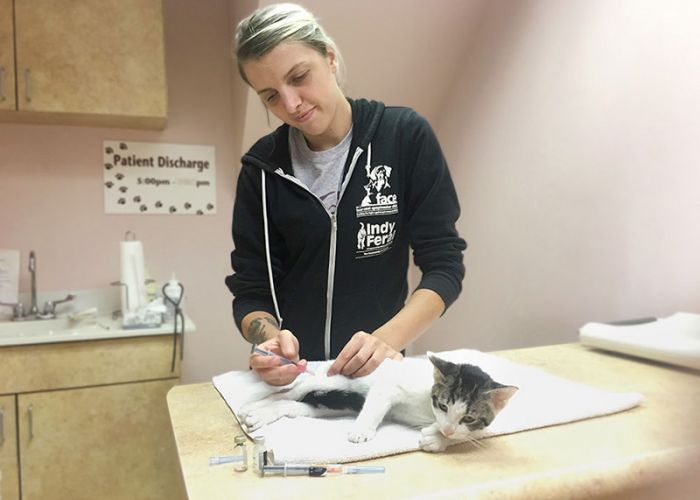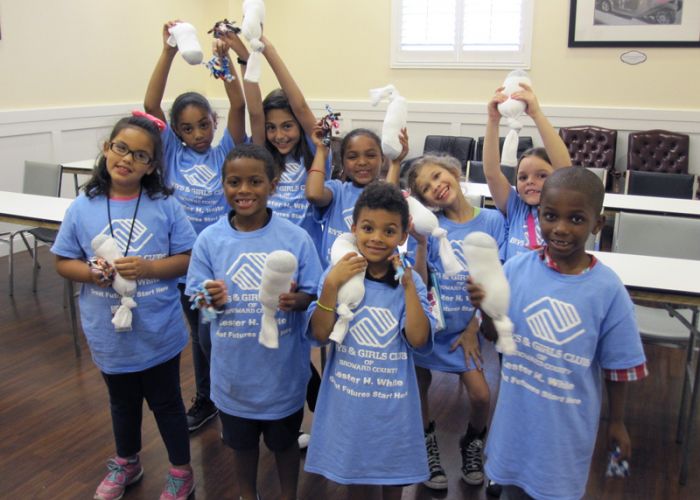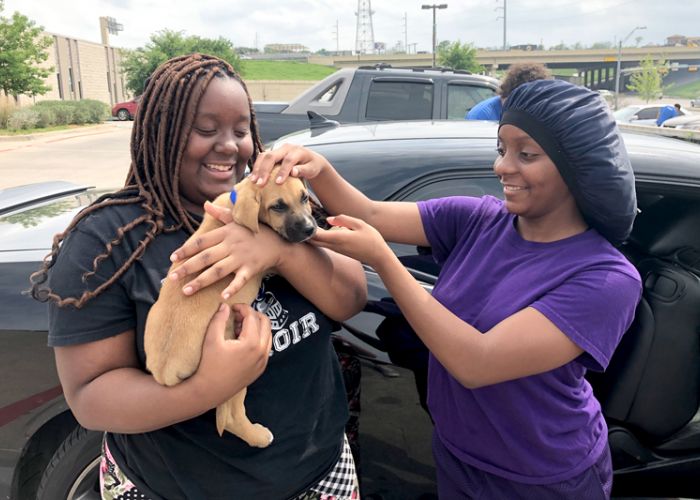All hands on deck in Virginia
Sailors and civilians join forces to help cats at naval station
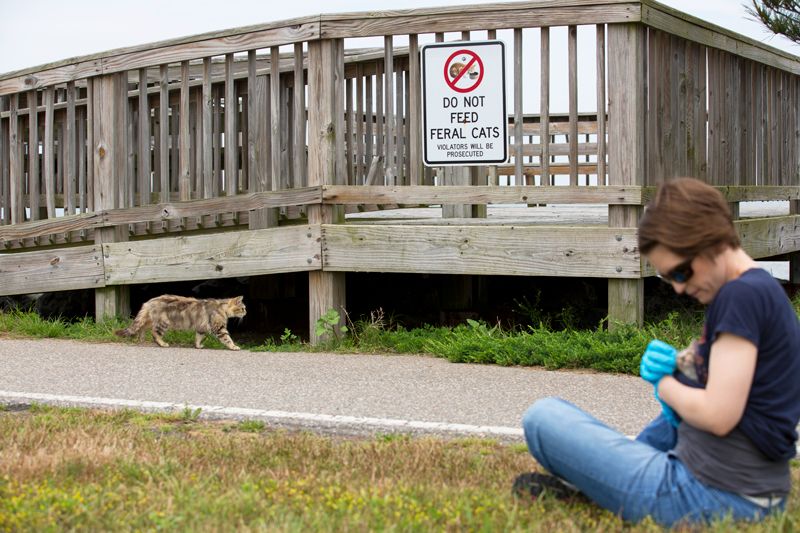
The September 11th National Day of Service and Remembrance was established to honor the victims of a national tragedy through acts of service that foster a spirit of unity and compassion. One such charitable act took place this past Sept. 11, when an active-duty member of the Navy transported two feral cats to their new home at the Bluemont, Virginia, Boulder Crest Retreat, a nonprofit wellness center for military members and veterans. Caitlyn McIntosh shared the news with her Facebook community: “True, American and military teamwork is happening to save lives today, however small they happen to be!”
McIntosh, whose husband serves in the Navy, is the team leader for Cat Team 7, coordinating a joint military-civilian effort to save the stray cats of Naval Station Norfolk in Virginia. Due to a policy barring stray animals on military bases, Cat Team 7 is working to trap, vet and rehome the cats either as house pets (for the kittens who can be socialized to humans) or barn cats (for those who are feral). Trap-neuter-relocate projects, as opposed to trap-neuter-return, are more challenging and typically reserved for last-resort situations like this. Inspired by programs successfully rehoming ferals as “working cats,” McIntosh and Cat Team 7 are taking on the challenge.
Still, it’s no small mission. There are an estimated 100 cats living on the base, but with the constant reproduction, it’s hard to say how accurate that number is. Most live along a rock line by Willoughby Bay, with some volunteering as mousers in warehouses on the base. Feeding of strays is prohibited under military regulations, so for the most part, the cats fend for themselves.
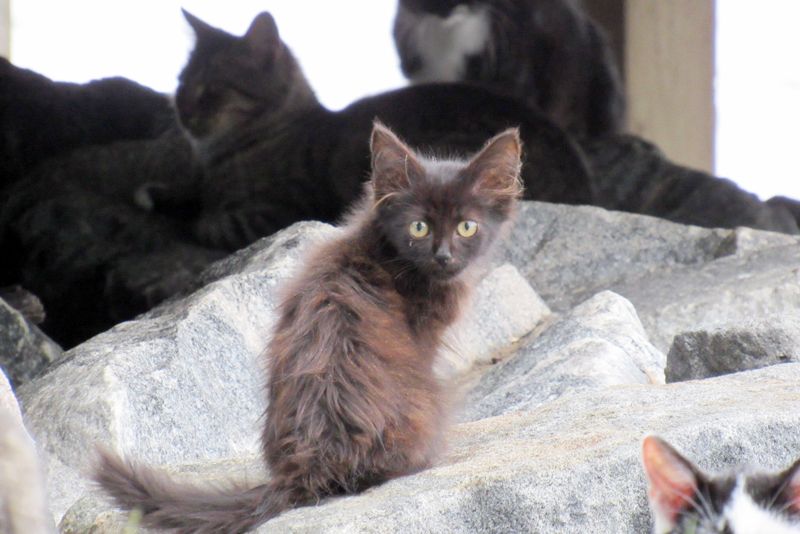
No one knows for sure where the cats came from, but they’ve been there for generations. After he was hired as executive director of the Norfolk SPCA four years ago, Rob Blizard started getting calls about the naval base cats. But efforts to help the cats met a large obstacle in the form of the Armed Services Pest Management Board’s Technical Document (TD) 37, “Integrated Management of Stray Animals on Military Installations,” which prohibits trap-neuter-return.
Efforts to change the Department of Defense policy at the Pentagon level led nowhere. Blizard initiated meetings between The HSUS, ASPCA, Alley Cat Allies and U.S. senators to try to find a path forward. But feral cats aren’t seen as a threat to national security and, understandably, aren’t a priority issue for the military. An inroad was needed at the local level.
Meanwhile, at the Norfolk base, a few people were feeding cats on the sly. The husband of one of those feeders had the ear of some higher-ups at Naval Station Norfolk who were interested in humane solutions for the cats. The conversation about stray cat management was about to change.
There is an old Zen proverb—“the obstacle is the path”—that aptly describes the situation facing the group that grew into Cat Team 7. In this case, the obstacle was TD 37. Instead of changing the policy or going around it, the group members used it as their path forward. While TD 37 falls short of an effective plan to manage the ever-present feral cat populations living on military installations across the country, it does promote adoption over euthanasia and encourages collaboration with sheltering and rescue organizations. Embracing the directive to work with local nonprofits, the group met with its new military contacts to discuss what could be done for the cats given the constraints.
“This is showing that the Navy isn’t just comprised of war machines but of human beings with kids that love animals, and they are animal lovers themselves.”
—Caitlyn McIntosh, Cat Team 7
Having the right group of people in the room made all the difference, says Blizard. “The atmosphere in the room was so positive!” In April 2016, the Navy and the Norfolk SPCA (acting as a sponsor for Cat Team 7) entered into a formal agreement to trap and relocate all the free-roaming cats on Naval Station Norfolk.
It’s a collaborative effort, with each partner’s role dependent on the others. The Norfolk SPCA, a private nonprofit shelter, assists with public relations and marketing and provides spay/neuter services through its clinic (thanks to a PetSmart Charities grant). The Navy’s environmental team traps the cats as Cat Team 7 identifies homes for them. There’s no rush to remove the cats before they’re placed, illustrating the Navy’s commitment to the project’s success. While only Navy personnel are allowed to set traps, Cat Team 7 volunteers can collect young kittens they can catch by hand.
Most of the 50 or so volunteers are active or retired military, military dependents or locals who understand the military process. McIntosh notes the importance of understanding military culture and respecting protocol, and takes that into consideration when recruiting volunteers. Volunteers take part in everything from temporarily housing the adult cats to identifying barns or other suitable outdoor homes. They may drive several hours to set up cats in relocation pens at their new barn home. Volunteers also foster and socialize kittens, who are placed for adoption with partner organization Billy the Kidden Rescue.
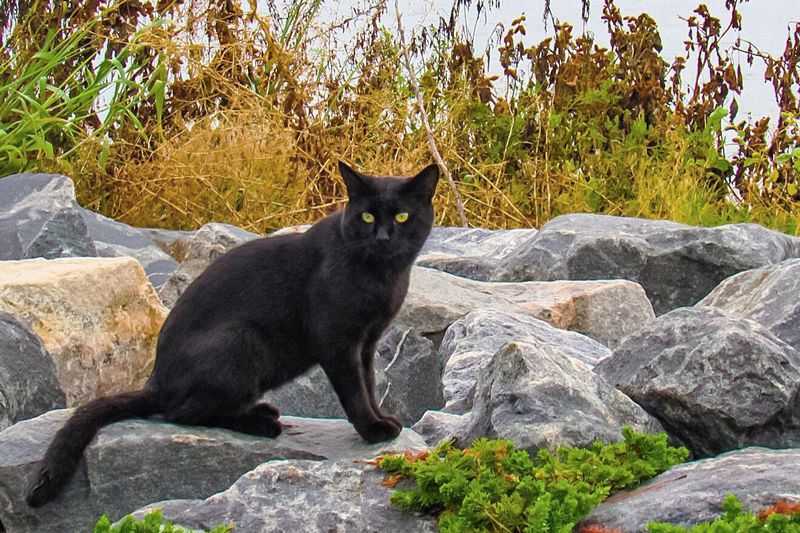
So far Cat Team 7 has removed 15 adult cats and 41 kittens and received generous donations from people who believe in the mission. McIntosh would love to see the effort replicated on other bases across the country. All it takes, she says, is one person who can speak both the language of the military and the language of animal welfare to pull it all together. Blizard agrees, advising shelters to cultivate relationships with the military members of their communities, both active duty and retired. Without those key people, Blizard says, “I don’t think we’d be where we are today.”
A week after the Sept. 11 delivery of two Norfolk cats, Boulder Crest Retreat posted an introduction on its Facebook page: “Meet Cami and Gunner, the new furry members of our BCR family! Thank you to Cat Team 7 in Norfolk, VA for helping facilitate our adoption of these two adorable barn cats.”
“This is a lot of things,” says McIntosh, “This is saving these cats. This is a morale booster. This is showing that the Navy isn’t just comprised of war machines but of human beings with kids that love animals, and they are animal lovers themselves and want to do everything they can within the limitations they have. … So many good things can come from a program like this.”



